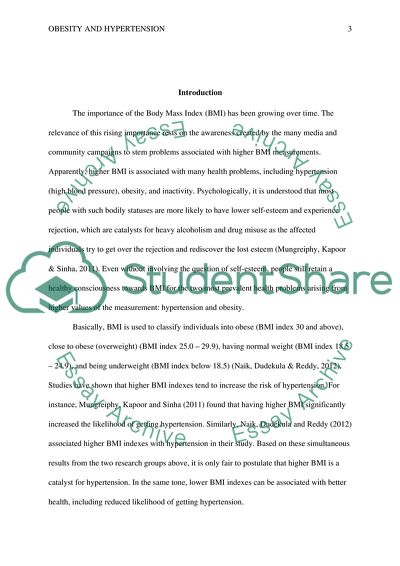Cite this document
(Investigating the Relationship between Obesity and Hypertension Term Paper Example | Topics and Well Written Essays - 1250 words, n.d.)
Investigating the Relationship between Obesity and Hypertension Term Paper Example | Topics and Well Written Essays - 1250 words. https://studentshare.org/statistics/1860923-any-area-of-study-detailing-the-statistical-analysis-described-in-the-instructions
Investigating the Relationship between Obesity and Hypertension Term Paper Example | Topics and Well Written Essays - 1250 words. https://studentshare.org/statistics/1860923-any-area-of-study-detailing-the-statistical-analysis-described-in-the-instructions
(Investigating the Relationship Between Obesity and Hypertension Term Paper Example | Topics and Well Written Essays - 1250 Words)
Investigating the Relationship Between Obesity and Hypertension Term Paper Example | Topics and Well Written Essays - 1250 Words. https://studentshare.org/statistics/1860923-any-area-of-study-detailing-the-statistical-analysis-described-in-the-instructions.
Investigating the Relationship Between Obesity and Hypertension Term Paper Example | Topics and Well Written Essays - 1250 Words. https://studentshare.org/statistics/1860923-any-area-of-study-detailing-the-statistical-analysis-described-in-the-instructions.
“Investigating the Relationship Between Obesity and Hypertension Term Paper Example | Topics and Well Written Essays - 1250 Words”. https://studentshare.org/statistics/1860923-any-area-of-study-detailing-the-statistical-analysis-described-in-the-instructions.


